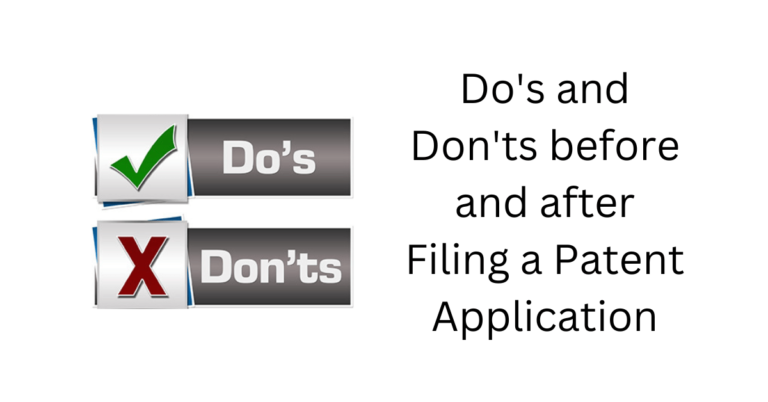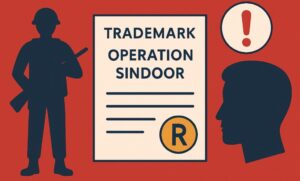Patent is a type of Intellectual Property Rights (IPR) granted to protect inventions for a certain period of time i.e. for twenty years. The procedure of patent filing in India entails multiple steps primarily starting with assessment of the invention’s patentability criteria and responding to patent office concerns. Patent protection is granted only when inventions satisfies the criteria of Novelty (New), Inventive Step (not evident to persons in the same field of work) and Utility (can be used in an industrial setting).
Table of Contents
ToggleKey Aspects to Identify about Patents
- Any person/individual or company or institution (both public / private) having an invention can file for a patent protection by approaching the patent office in their respective country. Anyone filing for patent protection is considered as an applicant. The invention can also be assigned by individual inventors to their institutions or companies who can file for a patent protection in their respective name.
- There are two types of patents product and process patents. Product patents will cover the product including the process of making the product whereas process patents will cover only the method or process of making the product.
- The law governing grant of patent protection in India is Indian Patents Act, 1970.
- Since patent laws varies from country to country and are territorial in nature, applicant seeking for patent protection will have to apply in each country of interest.
- Once patent protection is granted it will allow the patent holder or Patentee to exclude others from manufacturing, using or selling their patented invention or process for a period of twenty years (twenty years is considered from date of filing of the application).
- Seeking patent right protection involves financial expenses including filing fees, prosecution fees and payment of maintenance fees after the grant of patent.
- Not all inventions are automatically granted patent as certain inventions under the ambit of Section 3 and 4 of the Indian Patents Act, 1970 are excluded from patent protection.
The Do’s BEFORE filing a Patent Application in India
Assessment of the Invention
An applicant seeking to file a patent application for their invention (product or process or apparatus etc) should ideally undertake patentability criteria assessment of their invention. This assessment will help in understanding key features of the invention, inventions which are non-patentable, informs about existing knowledge and technical advance in the field of invention.
Types of Patent Applications
The next step is to decide on the type of patent application to be filed by the applicant. There are primarily 3 types of patent application Ordinary, Convention and Patent Cooperation Treaty (PCT) International Application.
- The ordinary application pertains to filing a patent application only in India which includes either filing a provisional or a complete specification.
- The convention application is filed by foreign inventors to obtain patent protection in India for a same invention after filing in their respective country. The convention application should be filed within 12 months from the date of filing in their respective country for same invention in other jurisdictions. The filing of convention application is allowed only for countries that are signatory to Paris Convention Treaty.
- The Patent Cooperation Treaty (PCT) International Application is provided under PCT and acts as a single entry point for an applicant to file for patents for same invention in multiple countries which are signatory to PCT. This system simplifies the filing procedure and provides a period of 30 months for applicants to file for patent in India through PCT national phase application. The PCT application provides extended period of time to file for a patent in multiple countries and provides assessment of patentability criteria of the invention.
Patent Application Drafting
After the assessment of the invention is conducted and the type of application is decided by applicant, the invention should be converted to a specified document. This involves drafting of a specification – a techno legal document which will explain the concept of the invention and the type of patent protection being claimed for the invention.
If the invention is still under experimentation and the product development requires time a provisional specification can be filed. The applicant will have a year (12 months) to complete the experimentation of their invention and file a complete specification. If a complete specification is not filed by the applicant after the filing of provisional specification within the stipulated time of 12 months, the provisional specification will be considered as abandoned.
Filing of Patent Application in India
Application submission at Indian Patent Office
The specification either provisional or complete with other required forms is submitted to the patent office along with stipulated fee. After the completion of filing of patent application, the date of filing is recorded and an application number is generated by the patent office.
Publication of application
If the applicant has filed a complete specification the application will be published after 18 months, computed from the date of filing or earliest priority date (applicable for convention / PCT applications) of the application. There is an option of seeking early publication under certain provisions of Indian Patents Act, 1970 by submitting a request and paying stipulated fees.
The Don’ts AFTER filing Patent application in India
The timeline involved in obtaining patent protection is of prime importance, any delay by the applicant in following up with the patent office will result in abandonment or rejection of their patent application.
Request for examination
The application is not automatically taken up for examination by the patent office. The applicant has to file a request for examination of their patent application after the publication of the application in patent journal. There is an option of seeking early examination under certain provisions of Indian Patents Act, 1970 by submitting a request and paying stipulated fees. Don’t fail to submit request for application examination within stipulated timeline.
Pre-grant Opposition
Once the application is published anyone can file a pre-grant opposition against the grant of patent for the claimed invention. In such case the patent office will intimate the applicant if a pre-grant opposition is filed against their application and the applicant will have to file and submit a response to the opposition in the patent office within stipulated timeline. Don’t fail to reply to pre-grant opposition within stipulated timeline.
Examination Reports by Patent Office
The patent office after scrutinizing the application will issue an examination report listing objections, this can include both procedural (forms, format and drawings) and substantial (lack of novelty, inventive step, under Section 3) objections. The applicant should ensure to reply to the examination reports within the stipulated time (6 months extendable up to 9 months. Don’t fail to respond to examination reports with stipulated timeline to avoid abandonment of the application by the patent office.
Hearing Notice
If the patent office finds the response and amendments made by the applicant to the examination report and pre-grant opposition (if opposed) satisfactory, a patent will be granted. If the response filed by applicant is unsatisfactory the patent office will conduct a hearing for further explanation by applicant and opponent (if opposed). If the applicant is successful in responding to all the objections of the patent office and opposition (if opposed) during the hearing the patent will be granted. In either case only when the applicant responds to hearing notice and addresses all objections raised in the examination report the patent will be granted by the patent office. Don’t fail to address all the objections during hearing.
There is an increased awareness on importance and benefits of seeking patent protection and most of the inventors are interested in seeking patent protection in India. Patent on inventions will help in effective commercialization, licensing and exploiting one’s invention without any competition in the market over a certain period. Patents can also allow revenue generation which can be reinvested to boost research and development in their field of invention.
The upgrade and refinement in the functioning of the Indian patent office has resulted in drastic reduction in the average time required for grant of patent protection. The minimum time required to complete the entire process of patent filing is less than two years in India.
To conclude, the current system with advancement in technology and online filing process encourages any inventor to file for a patent independently. However patent filing procedure involves a certain level of specialization for drafting complete specification and for successful prosecution of the application at the patent office. Preferably, seeking assistance from a Patent Agent or Attorney will be useful to navigate the process of obtaining a patent protection for the claimed invention.






